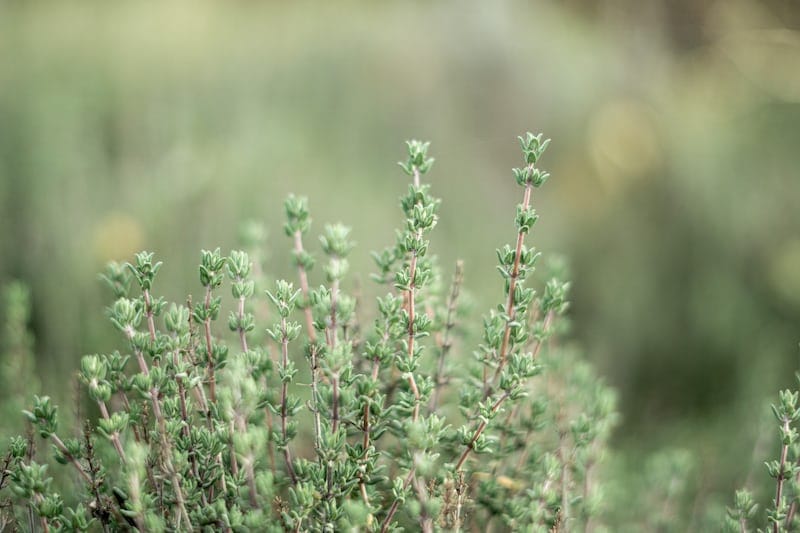Thyme
Definition
Thyme belongs to the shrubs of the labiate family as a medicinal and spice plant. With its small light purple flowers it grows up to 50 cm high and has small elliptical hairy leaves.

Varieties
The part of it that can be used is the shoot parts and the essential oil. The best known is the true thyme, which in turn comes in many different varieties. Both in growth height, flower colour and aroma. For example, some varieties can have a slight lemon to orange note.
Thyme is divided into two types: garden thyme (Thymus vulgaris) and field thyme (Thymus serpyllum).
Location
It prefers a bright and dry site with nutrient-poor and sandy soil. Outside the garden it can be found on roadsides, walls and dry meadows.
Origin
Thyme originates from the Mediterranean region and was introduced to Central Europe in the early Middle Ages.
Thyme species are known as perennial shrubs or semi-shrubs. They are woody at the base, but appear very herbaceous. They grow upright to prostrate. The leaves of the thyme species have entire margins or are occasionally toothed.
The petals have an elongated main axis on which the individual flowers are sessile. These can be stalked or stalkless and accompanied by small bracts at the base of the flower stalk.
The corolla tube, the tubular part of the flower, can grow up to 20 mm long and bloom in white, cream, purple or pink.
The fruits contain round seeds in an egg-shaped nutlet.
Use
Today, thyme is usually used as a dried or fresh kitchen herb. However, it can also be used as a garden plant or source of essential oils. The essential oils, flavonoids and bitter substances present in thyme are said to support the immune system. This is because the immune system in the intestines is said to be stimulated by the bitter substances. In general, essential oils have been used for thousands of years as components of spices, herbal teas and tinctures for various internal purposes.